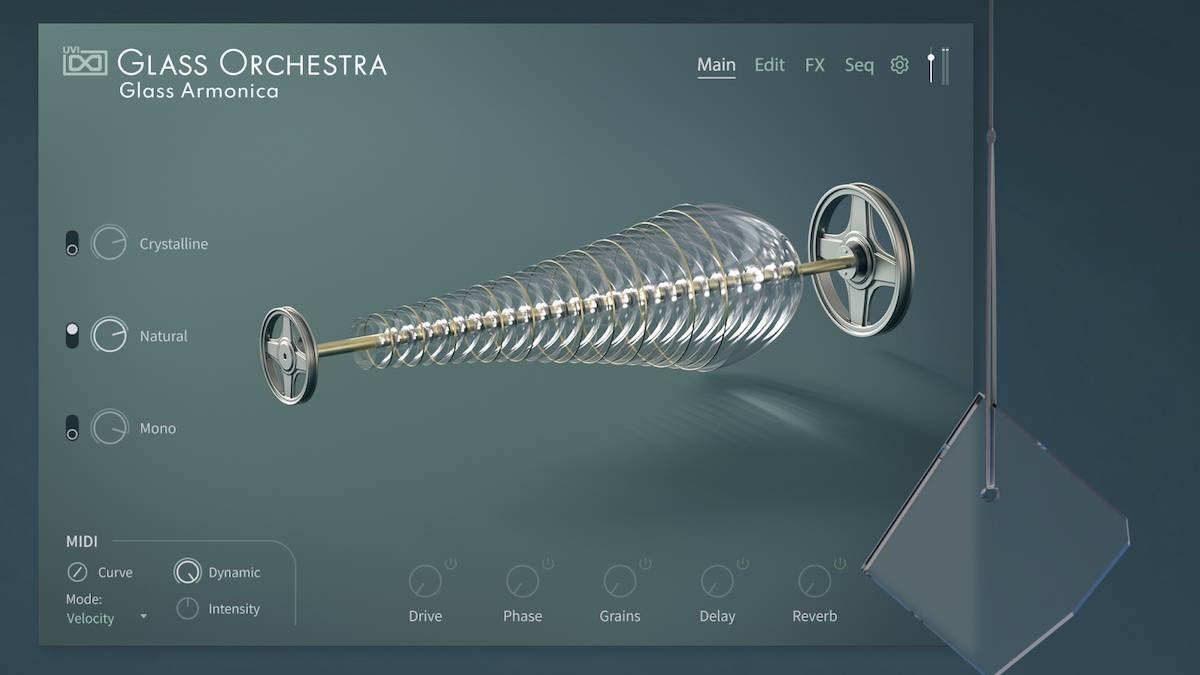Digital
Glass Orchestra Sample Library for UVI Workstation and Falcon – the Synth and Software Review

Glassware takes on a new meaning
In the late ‘60s, when I had finished my private study on banjo, my teacher introduced me to recordings from a diverse number of sources in order to keep me humble about my accomplishments. Among these was Music for Glass Harmonica. The sound of this instrument was like nothing I’d ever heard before: ethereal and ghostly tones issuing from an array of tuned glass bowls or goblets, played by rubbing a wet finger along the edge of the glass.
Compositions date back to the 1700s and Mozart, among others. It was a favorite of Benjamin Franklin, who is credited with inventing the mechanical glass harmonica in 1761, in which the bowls were mounted horizontally on a rotating pole. They were played with moistened hands, which rubbed the bowls to produce sound.
More recently, science historian and musician Jean Claude Chapuis became fascinated by the sound of the instrument. He was inspired to create a “Glass Orchestra,” a 14-instrument array of glass devices that were struck, rubbed, and bowed. UVI, the developer, contacted Chapuis about creating a sample library that captured the instruments in their original forms, as well as new and different synthesized variations. They focused on Chapuis’ collection (for more information on Chapuis and his collection, please see this YouTube video.

Figure 1, the Glass Marimba folder
Cook’s tour
Glass Orchestra is arranged in 18 folders. The first 14 (there is no number 13) capture each instrument in its native playing techniques (see PDF Extract for a brief description) with subfolders for specific articulations. For example, the Glass Marimba nests folders for bow, mallet basics, and split-velocity variations (Fig. 1).
The final five folders exploit its synthesis and rhythmic features for sounds ranging from delicate and transparent to eerie and jarring. It’s remarkable how malleable glass can be as a sound source.
For starters, let’s look at the Header at the top right. Glass Orchestra has four main areas: Main, Edit, FX, and SEQ. There’s also a small button that enables any patch to accommodate MIDI Polyphonic Expression (MPE), which we’ll get to shortly.
The Main page has plenty to shape your sound. Start with three virtual mic positions: Crystalline, Natural, and Mono. The first two are stereo mics, with the second using ribbon mics and more room tone. Mono is obviously a single-mic recording, and occasionally uses a contact mic. You can use any or all three, and each has a level control for mixing.
Five macro knobs (Drive, Phase, Grains, Delay, and Reverb) enable quick tweaking for the level of selected effects. For example, Drive offers five varieties: mild, crunch, overdrive, clipper, and zombie. The Phase macro offers modulation effects, including flanger and rotary (which sounds great on glass instruments). To my ear, working with the Grains macro yields the most impressive results, turning the Verrophone sustain patches into a ghostly choir with subtle, high, singing harmonics.
The Edit window (Fig. 2) offers standard ADSR envelopes for amplitude and multimode filter with a cute little handle attached to attack, decay, and release rates. Grab it with the mouse and drag it upward or downward, and it bows in either direction, indicating a curve to the selected rate.

Figure 2, the Edit window
The SEQ section (Fig. 3) hosts a step-based arpeggiator-and-sequencer combination that is sophisticated yet easy to use. Beyond conventional parameters such as pitch, velocity, and pan, modes for each step, such as gate time, chord, bends, and the ability to tie steps together, make for some colorful and sophisticated rhythms, and the clear user interface invites experimentation.
Starting with the Arp & Sequences folder, the collection veers from strict replication of the source instruments, and you can get a good idea of the instrument’s prodigious rhythmic chops.

Figure 3, the SEQ (sequencer) section
Next to the SEQ section, don’t overlook the pull-down menu disguised as a gear icon; it’s key to converting any patch to MPE compatibility. For that matter, Glass Orchestra provides the Xtra MPE folder with some pretty startling examples of how far you can stretch these sounds.
More than half full.
You may not use these sounds every day, but as you play them, you’ll find plenty of applications for them in cinematic productions or anywhere you need imaginative and unusual sounds. If you have UVI’s Falcon synth (see Jim Aikin’s review here), the sonic possibilities expand exponentially. Recommended without reserve.
Price: $199















